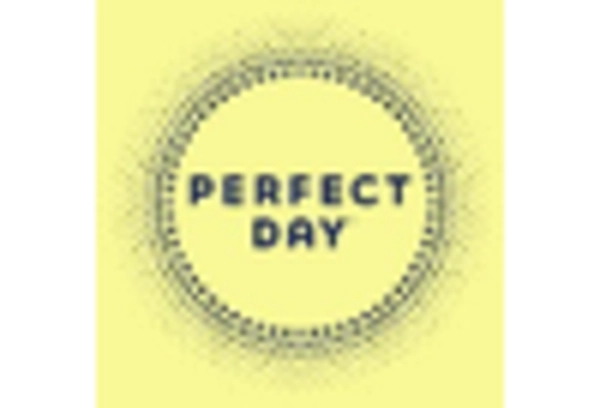The Synthetic Food Market is currently characterized by a dynamic competitive landscape, driven by increasing consumer demand for sustainable and ethical food alternatives. Key players such as Impossible Foods (US), Beyond Meat (US), and Eat Just (US) are at the forefront, each adopting distinct strategies to enhance their market presence. For instance, Impossible Foods (US) focuses on innovation in product development, particularly in creating plant-based meat alternatives that closely mimic the taste and texture of animal products. Beyond Meat (US), on the other hand, emphasizes strategic partnerships with major food retailers and fast-food chains to expand its distribution channels. Meanwhile, Eat Just (US) is leveraging advancements in cellular agriculture to produce lab-grown eggs, positioning itself as a pioneer in the synthetic food sector. Collectively, these strategies contribute to a competitive environment that is increasingly centered around innovation and consumer engagement.
In terms of business tactics, companies are localizing manufacturing to reduce supply chain complexities and enhance product freshness. This approach is particularly evident in the moderately fragmented structure of the market, where numerous players vie for consumer attention. The collective influence of these key players is shaping a landscape that encourages collaboration and innovation, as companies seek to differentiate themselves through unique offerings and sustainable practices.
In August 2025, Impossible Foods (US) announced a partnership with a leading global food distributor to enhance its supply chain capabilities. This strategic move is likely to streamline operations and improve product availability, thereby reinforcing its competitive edge in the market. The partnership not only facilitates broader distribution but also aligns with the growing consumer preference for locally sourced products, which could enhance brand loyalty.
In September 2025, Beyond Meat (US) launched a new line of plant-based sausages aimed at the breakfast market, targeting a demographic increasingly interested in healthier options. This product expansion reflects a strategic pivot towards capturing a larger share of the breakfast segment, which has been traditionally dominated by animal-based products. By diversifying its product range, Beyond Meat (US) appears to be positioning itself as a versatile player in the synthetic food market, potentially attracting a wider consumer base.
In July 2025, Eat Just (US) secured a significant investment to scale its lab-grown egg production, indicating a robust commitment to advancing cellular agriculture technologies. This funding is expected to accelerate the company's research and development efforts, allowing it to enhance production efficiency and reduce costs. Such advancements could position Eat Just (US) as a leader in the lab-grown food sector, appealing to environmentally conscious consumers seeking sustainable alternatives.
As of October 2025, the competitive trends within the Synthetic Food Market are increasingly defined by digitalization, sustainability, and the integration of artificial intelligence in production processes. Strategic alliances among companies are shaping the landscape, fostering innovation and collaboration. Looking ahead, it is anticipated that competitive differentiation will evolve, with a pronounced shift from price-based competition to a focus on innovation, technological advancements, and supply chain reliability. This evolution underscores the importance of adaptability and forward-thinking strategies in a rapidly changing market.


















Leave a Comment